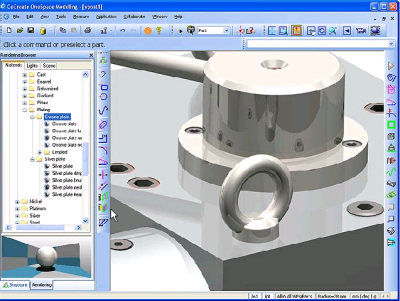Common Lisp at CoCreate (29 Dec 2007)

 But much of what is said
in the article about Lisp still applies.
The HP Journal article concluded:
But much of what is said
in the article about Lisp still applies.
The HP Journal article concluded:
Common Lisp is also used as a user accessible extension language for HP PE/SolidDesigner. It is a standardized, open programming language, not a proprietary one as in HP PE/ME10 and PE/ME30, and the developers of HP PE/SolidDesigner believe that this will prove to be an immense advantage.SolidDesigner was the original product name; ME10 and ME30 were predecessor products which implemented their own little macro interpreters. Back then, we were a bit cautious about the potential benefits we'd reap, as the product was still in its early days. By now, however, we can say that Common Lisp was a key factor in helping a fairly small team of developers keep pace with the big guns in the industry, due to all the well-known productivity features in Lisp, such as macros, the REPL, or automatic memory management. The HP Journal article describes how we use macros to define a domain-specific language called action routines, which are state machines which guide users through commands. Later, we extended that concept by automatically generating UI for those commands: Using the sd-defdialog macro, application developers can implement full-blown commands in just a few lines of code, without having to write any (or at least hardly any) code for services such as:
- Automatic "macro recording" of commands
- Context-sensitive online help
- UNDO support
- Command customization (commands can be started from toolbars, menus, a user input line, or from our "taskbar")
- Sequence control (dependencies of user inputs on other input)
- UI creation and layout
- Adherence to UI style guides
- Graphical feedback both in the UI and in 3D graphics windows
- Type and range checks for input data
- Automatic unit conversions (imperial to metric etc.)
- Prompting
Previous month: Click here.
Revision: r1.3 - 02 Jan 2008 - 19:10 - ClausBrod